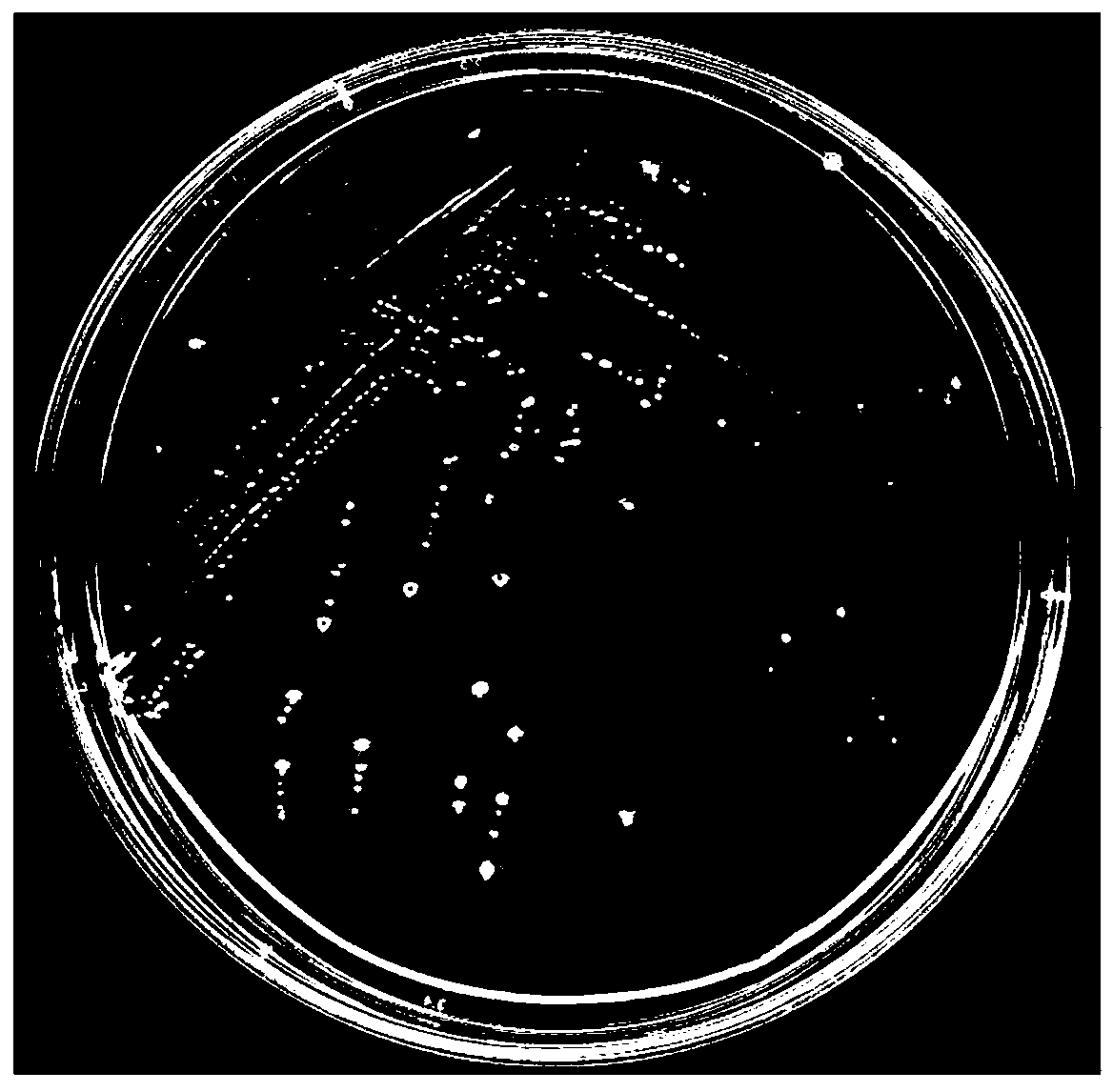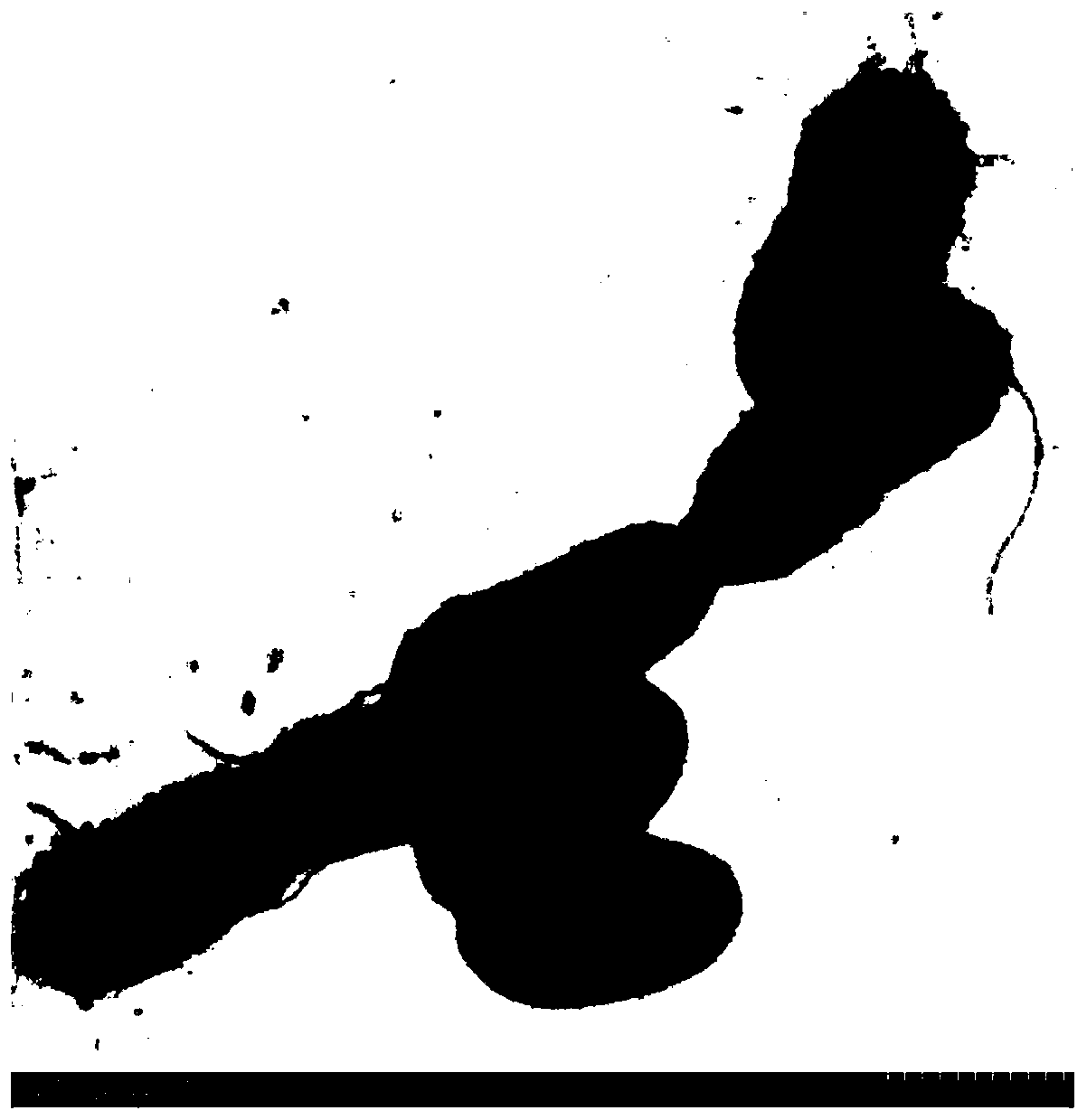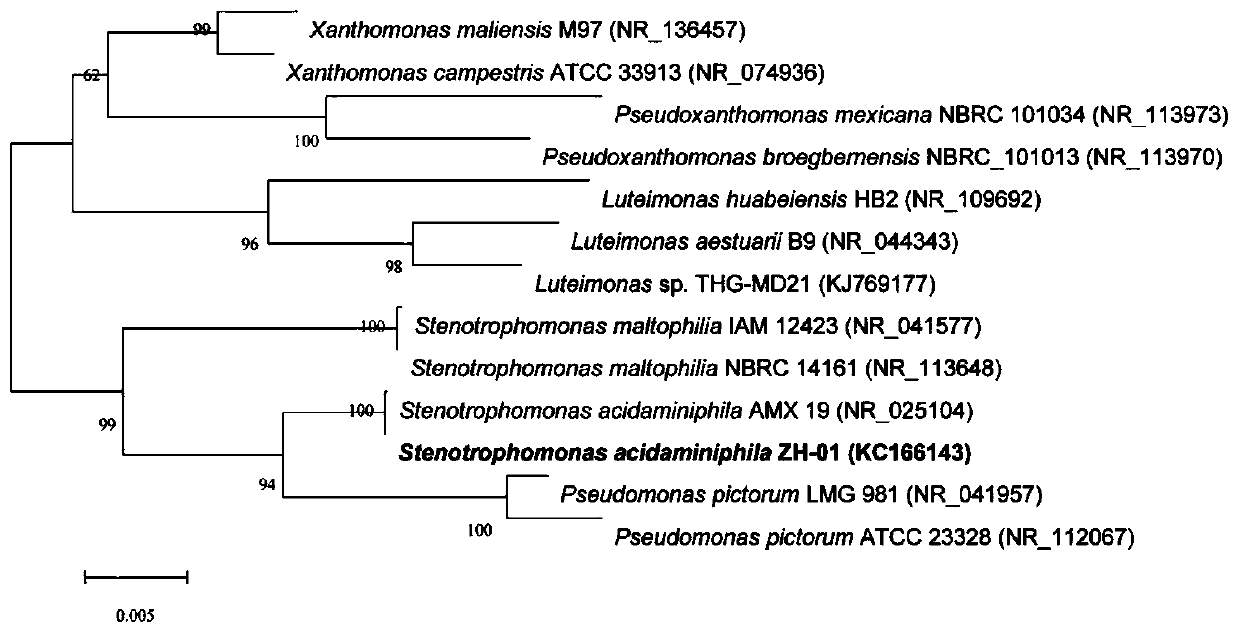Degradation strain of pyrethroid insecticide and application thereof
A technology of pyrethroids and pesticides, which is applied to the application of environmental microorganisms and agriculture, can solve problems such as damage, soil pollution, and ecological environment damage, and achieve the effects of enriching the germplasm resource pool and having a remarkable degradation effect.
- Summary
- Abstract
- Description
- Claims
- Application Information
AI Technical Summary
Problems solved by technology
Method used
Image
Examples
Embodiment 1
[0031] Example 1 Isolation, screening and identification of degrading bacterial strain ZH-01
[0032] 1. Enrichment culture, isolation and screening of pyrethroid insecticide-degrading bacteria:
[0033] From collecting the activated sludge of sewage treatment pond in Singapore, take by weighing 5g sample and join in the above-mentioned MSM liquid culture medium that contains bifenthrin (50mg / L) in 50mL. After culturing at 30°C and 200rpm for 7 days, the mass concentration of pesticides was sequentially increased from 50mg / L to 100mg / L, 200mg / L, 400mg / L, and 800mg / L at an inoculum size of 10% each time for continuous enrichment culture. Then, the culture solution transferred for 4 times was serially diluted and spread on the LB solid plate containing 50 mg / L bifenthrin, and cultured upside down at 30°C for 2 days. After a single colony grows on the plate, pick a single colony and streak it several times to purify it, and obtain a strain of bacteria, numbered ZH-01.
[0034] ...
Embodiment 2
[0039] Example 2 Microacidophilus Stenotrophomonas ZH-01 Degradation Ability Determination of Pyrethroid Insecticides
[0040]1. Add pyrethroid insecticides such as bifenthrin, deltamethrin, beta-cyfluthrin, fenpropathrin, beta-cyhalothrin and beta-cypermethrin respectively in basal salt medium (MSM), Make the final concentration 50mg / L; the inoculum concentration is 1.0×10 7 CFU / mL of ZH-01 bacterial agent, and set the medium without inoculation as the control, culture at 30°C for 120 hours, take samples regularly, use HPLC method to determine the residual amount of pesticides, and calculate the degradation rate.
[0041] The calculation method of degradation rate is as follows:
[0042]
[0043] 2. The results are shown in Table 1.
[0044] The experimental results show that the strain ZH-01 rapidly degrades various pyrethroid insecticides in a short period of time, and the degradation rate of 50mg / L bifenthrin reaches more than 85% within 72 hours, and the degradation ...
Embodiment 3
[0047] Example 3 Microacidophilus Stenotrophomonas ZH-01 Soil Remediation Experiment
[0048] 1. Soil sample for test
[0049] The topsoil (0-20cm) of the farmland was taken from the experimental field of the teaching farm of South China Agricultural University.
[0050] After the soil samples were retrieved, they were first placed in a cool and ventilated place to dry naturally, then ground after air drying, passed through a 2mm sieve, and a certain amount of bifenthrin was dissolved in acetone, and then soaked in diatomaceous earth to completely dissolve the bifenthrin. adsorption.
[0051] The soaked diatomaceous earth is placed in a fume hood to dry, and it is mixed into the soil so that the concentration of bifenthrin in the soil is about 50 mg / kg. Take 500g of each soil sample and cultivate it in a constant temperature and humidity incubator at 30°C. 7 The inoculation amount of CFU / g was inserted into the ZH-01 degrading bacterial agent, and the addition of distilled ...
PUM
 Login to View More
Login to View More Abstract
Description
Claims
Application Information
 Login to View More
Login to View More - R&D
- Intellectual Property
- Life Sciences
- Materials
- Tech Scout
- Unparalleled Data Quality
- Higher Quality Content
- 60% Fewer Hallucinations
Browse by: Latest US Patents, China's latest patents, Technical Efficacy Thesaurus, Application Domain, Technology Topic, Popular Technical Reports.
© 2025 PatSnap. All rights reserved.Legal|Privacy policy|Modern Slavery Act Transparency Statement|Sitemap|About US| Contact US: help@patsnap.com



